The HPE ProLiant MicroServer Gen10 Plus is a follow-up to the HPE ProLiant MicroServer Gen10 we reviewed and HP ProLiant Microserver Gen8. With this new generation, HPE is making some of the most significant changes that we have seen to date. If you are not familiar with the HPE ProLiant MicroServer line, it is a family of small servers meant for SMB offices and edge deployments. Generally, these are low power, low noise, single-socket servers.
Update: you can now read our formal ProLiant MicroServer Gen10 Plus Review.
HPE ProLiant MicroServer Gen10 Key Changes
There are several big changes to the HPE ProLiant MicroServer Gen10. The form factor has changed, the CPUs have changed, iLO 5 can be added, more networking is included, and there are now more expansion capabilities. HPE has added a lot while keeping the noise levels in the 21dba range for quiet operation even in work areas.
Form Factor Change
The new MicroServer Gen10 Plus now has a more compact form factor. The unit is less than half the height of the previous generation at only 4.58″ or 11.7cm tall.
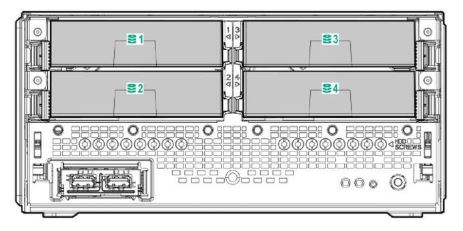
This form factor change is largely due to changing the internal layout. Instead of the previous drive layout with all drives in a row placed vertically, the drives are now placed in a side-by-side configuration with two columns and two rows for the four drives. One will notice that the optical drive bay has been sacrificed to make the unit smaller.
One will also notice that this unit appears to be powered via an external power source since there is only a DC input. HPE says the unit is good for up to 180W even in this compact design.
CPU and Expansion Changes
While the previous generation MicroServer was based on the AMD Opteron X3000 series, with options such as the AMD Opteron X3421, HPE in this generation is moving back to Intel. Specifically, we are seeing pre-configured models with the latest Intel Xeon E-2200 Series such as the Intel Xeon E-2224. This offers an enormous boost in CPU performance. Beyond CPU performance, it also opens up more expansion capabilities.
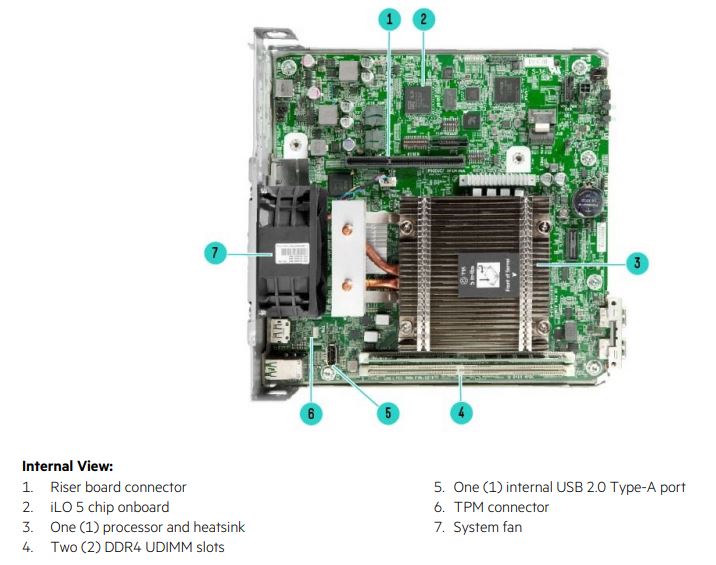
With the new model, we get a low-profile PCIe Gen3 x16 slot which adds an enormous amount of flexibility to the line. We also get two DDR4 UDIMM slots that support ECC memory. HPE lists 2x 16GB or 32GB as the maximum that is supported in the platform. Technically, the Xeon E-2200 series can support 32GB DIMMs so this is something we want to test. One will also notice that there are two front-panel USB 3.2 Gen2 ports and four USB 3.2 Gen1 ports on the rear. There is even an internal Type-A USB 2.0 header as we find on many higher-end servers. Other expansion includes a VGA and DisplayPort 1.0 for video output.
Networking and iLO 5 Changes
Networking is another major story. We move from dual 1GbE ports on the previous model to quad 1GbE ports on this newer model. The official spec sheet says this is an “Embedded Intel i350 AM41Gb 4-port network controller.” That is a big deal. The Intel i350 is a higher-end 1GbE adapter and is supported out-of-the-box by virtually every OS.
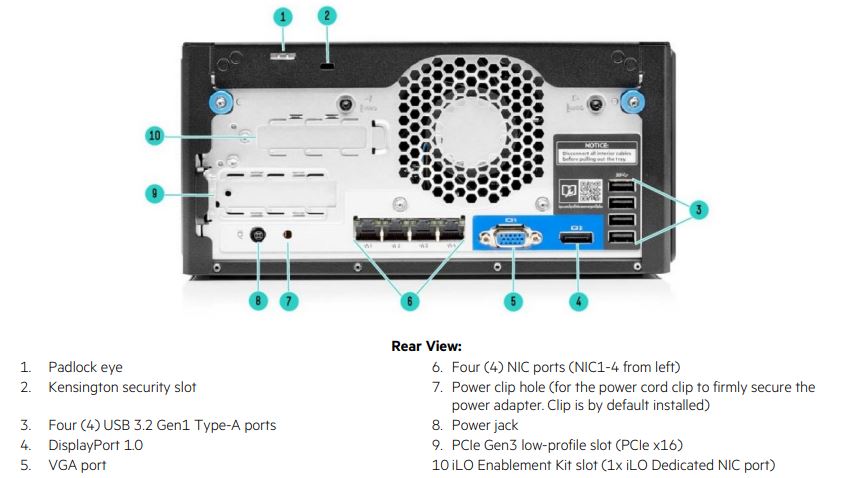
With this generation, iLO is making a comeback. HPE has an iLO 5 Enablement Kit with a dedicated PCIe x1 riser slot for an out-of-band NIC. One can buy iLO 5 Advanced and support for this MicroServer and manage it alongside higher-end units like the HPE ProLiant DL325 Gen10 we reviewed. A point of feedback we heard on the AMD-based Gen10 MicroServer was that the lack of an iLO option was unfortunate.
Final Words
STH will have a full review of the new MicroServer when HPE gives us the go-ahead. This is a product we have been aware of for months now and have been eagerly anticipating. I actually sat with the team in Taipei in October 2019 and discussed the product. With the MicroServer Gen10 Plus the team, there certainly was talking about addressing points of feedback we gave, our readers gave, and that HPE noted as well.
Beyond the hardware, HPE has solutions to make OS installations such as Windows Server 2019 easier. We even saw HPE GreenLake mentioned in the datasheet.
Availability should happen in a few weeks, but we do not expect the wait to be long. Personally, I have been very excited about this server, and I cannot wait until we can share the full review. Stay tuned to STH for more.

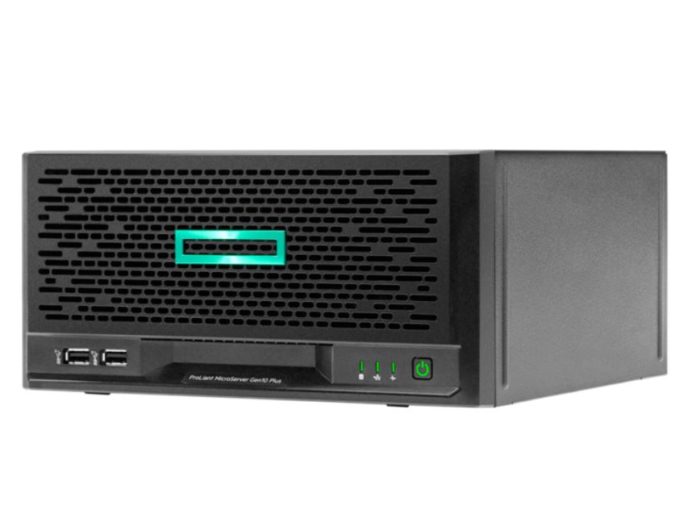

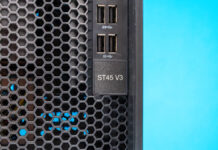
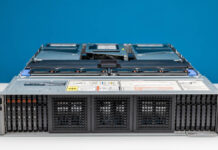
Is there a reason(beyond MCP money) that HPE didn’t went AMD? Even in this 2-4 core segment, TCO should be down with their 7nm processors.
Hi Steffen,
I believe the Opteron X3400 was used because of when the original Gen10 was launched, and Intel’s product roadmap/ transition. HPE does product planning not just for a 6-month lifecycle, but on a longer-term basis.
AMD Ryzen is still not a direct E-2200 competitor. Also, Intel can bundle features such as the i350 NIC. I think a lot goes into these decisions.
A shame to switch back to Intel at this point in time. The AM4 socket would have been so much more interesting.
I feel your pain. Better than Ryzen/AM4 would be to use Epyc Embedded 3000 series CPUs, with RDIMM support. They would be ideal for this form-factor and have ample performance and I/O. Ideal for homelab or NAS servers. A pity.
I know of mini-ITX motherboards with Epyc Embedded 3000 but dream of a larger sized motherboard that fully exploits all the features the platform has. Also I don’t understand fully why manufacturers are putting Intel NIC controllers on Epyc Embedded 3000 mini-ITX motherboards instead of using the CPU SOC 10GbE networking capabilities. I know, Intel NIC reputation and server use and bla bla but if we want cheap and performing NICs… why shed AMD built-in ones?
Patrick, Ryzen is no option for this server, but man needs to wonder why HPE has not used Epyc 3xxx line which also budles NICs and even 10Gigs. Sure Epyc 3xxx awaits update probably during the summer but still makes a lot of sense in this box instead of E-22xx IMHO.
I’m more excited about the change from AMD Opteron to Intel Xeon.
I can’t wait to see what CPUs we can out in this and iLO 5 with a x16 is killer.
Please do the full STH review on one
I’m a bit disappointed that there doesn’t appear to be an onboard M.2 (or even MSATA) slot for a boot volume, but other than that this looks like a very nice machine. Just remains to be seen how pricey it will be!
M.2 would really have been good, as it is you can use the PCIe slot for an U.2 cache drive OR 10g connectivity, meaning you can chose between good every day user-facing performance and quick backup/restore from a mirror. These days that is not unimportant and the restriction painful.
I’d hope for a M.2, SATA DOM, or both.
I also like that a STH news post is now more in-depth than most of the “reviews” of this system will be.
I can’t wait to see STH’s full review.
I must confess to being slightly disappointed.
While I’m pleased to see the return of ILO, I’m disappointed that it’s not built-in.
I would like to have seen 10 Gb ethernet. 4x 1 Gb isn’t particularly useful for many use cases.
I would like to have seen support for the Intel® Xeon® E-2278GEL processor at the top end. Hopefully the CPUs are socketted rather than surface mounted.
I am disappointwd to see no support for drives larger than 4 TB; I hope this is just the limit of what HP supply rather than an actual limit.
I’m disappointed to see such a low RAM limit; I’m guessing that this is a product differentiation issue. Again, I hope that this is a supply limit rather than a hard limit.
I am currently using 10tb drives in a gen8 chassis, so I am confident the 4tb will not be a limit.
As for 10gb nics, given the focus on edge/smb it would have raised the base price for everyone with only a small percentage of the users needing it… 10gbit still requires a lot of juice both on the client and the server side and 10gbit switches aren’t really an option for the average joe that looks into buying a microserver (no equipment rack, low noise / low power required).
32gb of ram … Let’s hope 64gb will fit … It woul be a very nice upgrade path for my freenas based gen8s….
@José Manuel
Both AMD and Intel have built-in 10GbE controllers in some of their CPUs, but these are just controllers… There’s no PHYs. The motherboard have to provide the PHY to make use of it. But almost all of the cost is in the PHY especially the 10GbE Base-T ones, not the controller.
AMD uses a standard PCIe interface between thier controller and the external PHY, which can be coupled by any PHY from their partners like Qualcomm & Realtek, this PHY can be Copper Base-T or optical SFP or anything other.
Intel on the other hand uses a non-standard proprietary bus between the controller & the PHY and doesn’t offer PCIe PHYs either. So to use their built-in controller you must use their PHYs only.
But duo to Intels performance and stability in network controllers & PHYs, most mid range to high-end solutions will skip AMDs controller and use a full Intel Package instead.
I with they had iLO5 SMB with iKVM for like $50. That’d be good but the current iLO5 Adv pricing is too much.
I don’t see where there is a mention of a 4TB size limit on HDD. I double-checked Patrick’s article and I looked over the specs on HPE’s web page. Perhaps someone can provide a link.
I would be concerned with uneven heat buildup in the HDD bay. The upper drives may get warmer than the lower drives. That is why I would have preferred to see vertical HDD mounts.
There is no indication in this quick overview regarding what chip is driving the video. Why didn’t HPE choose the E-2224G chip with built-in video support over the E-2224? The STH E-2200 Series Launch article shows that price and very small clock speed bumps might be the only differentiating factors.
Finally, I agree with the comments of others regarding the network choice of 4x1G over 1x10G. Now that cost-effective 1G-10G-Nbase switches are appearing, a 10G port on a workgroup NAS would be better choice over 4x1G.
Looks like if you want onboard video, you need to use the Pentium G5420 2 core cpu. https://www.hpe.com/au/en/product-catalog/servers/proliant-servers/pip.1012241014.html
The iLo5 chip is on the system board, the enablement kit is for remote/out of band management:
On System Management Chipset
HPE iLO 5 ASIC
NOTE:
MicroServer Gen10 Plus does not support remote management/ out-of-band management by default. The MicroServer Gen10 Plus iLO Enablement Kit (P13788-B21) must be installed to activate remote management. Without the iLO Enablement Kit, the server only supports in-band management features.
The iLO Enablement Kit supports below features:
1) It acts as an activation key for server remote management
2) An iLO dedicated NIC port comes with the kit
3) The iLO 5 Essentials (3yr support) is implicitly licensed. Essentials features are activated upon installing the enablement kit:
– Email-Based Alerting
– Integrated Remote Console (IRC/Virtual KVM – Supports text and graphics)
– Virtual Media via Integrated Remote Console
So a little bit of storage, basic file/print serving and, perhaps DHCP/DNS and perhaps AD for a small office…..; grab two of them to run as a spare for quasi-HA….
@Mark Dotson:
> So a little bit of storage, basic file/print serving and, perhaps DHCP/DNS and perhaps AD for a small office…..; grab two of them to run as a spare for quasi-HA….
Indeed. I have a couple of Gen.8’s, and after I worked through the HPE website quirks, I’m using my pair this kind of configuration too.
Aside from a few others I’m also looking at, as far as servers go (I’m not going as far as enterprise grade) a pair of these is about the best you can do for a quiet home server and home LAN setup. Run the second machine as a dedicated backup host.
The build, HA and DR infrastructure from there on in will manifest wonderfully. And you get a solid foundation, from forethought, planning, and luck, to run a very good LAN.
It’s amazing how inexpensive these kind of systems have become (a small office server for U$400+):
“HPE ProLiant MicroServer Gen10 X3421 1P 8GB-U 4LFF NHP SATA 200W PS Soln Server”: https://www.hpe.com/us/en/product-catalog/servers/proliant-servers/pip.specifications.hpe-proliant-microserver-gen10.1010808438.html
Exploded view: https://www.hpe.com/h22228/video-gallery/us/en/products/servers-and-systems-hybrid-cloud/servers-multi/7ce088e2-7d23-4891-991a-ea6ca343718f/hpe-proliant-microserver-gen10-_-exploded-view-animation/video/
Patrick, if there’s a link to HP’s US website in the article it’s not jumping out at me; so I found the above link, and pricing from a HPE recommended retailer (whose URL is not included in my comment).
I agree with some of the other comments, it’s a huge shortcoming that there are so few AMD choices; and no Epyc in that category. One would think that the embedded Epyc would be perfect for that use case, but HPE uses Opteron X3421 2.1 GHz (example: Mfr. # P04923) instead (or in the majority of cases goes Intel).
Much better to assembly server by yourself using Mini-ITX board based on EPYC 3251 or Xeon D. It will be cheaper, more reliable and less expensive.
I note that the E2278GEL supports 128 GB RAM.
I strongly believe you should assamble your own system .but not many companies or msps do that.
If you want reliability your don’t build your own. You go with a manufacturer that has soak tested the configuration and applies patches at an holistic system level. Speed and flexibility roll your own, but not for reliability (IMHO anyway)
Don’t see the point of the quad nic, would rather have a 10GB port. Costed ILO is annoying – as usual. Boot volume choice is disappointing. Is it really a displayport 1.0 – that is ancient (ok not as old as the vga!)
Pity they don’t do a “FAT” model where you could pack 8 disks in.
Looks cool tho!
OK I read you can upgrade the quad nic – one assumes at additional cost
“offers a 4-port NIC standard with the option to upgrade with a variety of networking options for a bit more power, including 1GbE, 10GbE BASE-T and SFP+ edge cards”
Considering something like this as an upgrade to my existing veeam backup repository in my home (old circa 2010 HPEX495 running linux – 2.5 Ghz pentium duo with 4GB RAM, 4 trays and single 1Gb rj45. This newer system might be a good upgrade but would benefit more if it had 10Gb SFP+ or BASE-T or better yet an expansion slot for me to add a NIC later.
oh, I see it has a PCIe x16 expansion slot. I could use that for an SFP+ NIC. hmm Looking interesting
Sadly HPE’s choice of Intel at this time is considerably less exciting, given how much of a wet towel their security situation is. Theres certainly isolated environments I dont mind deploying Intel chips to where their use is entirely logical – while their SKU list is massive, it does mean they have lots of offerings. A microserver in a branch office is probably not one of those isolated environments however – at least not without additional work and hardware. In general I feel much more comfortable using AMD’s hardware simply due to the fact Intel’s offerings have become a liability in this day and age while AMD’s security game has been much more on-point.
Does anybody know – if you get the iLO kit – does that occupy the PCIe x16 expansion slot?
Or does the iLO have it’s own separate riser card/slot?
Also – the official page at https://www.hpe.com/au/en/product-catalog/servers/proliant-servers/pip.1012241014.html says:
> Four embedded network ports provide the networking needs for small business customers. Optional 1GbE and 10GbE BASE-T and SFP+ standup option cards are supported for those who require more.
Would this replace the existing 4-port Gigabit NIC?
(Basically, I’m trying to save the PCIe x16 slot for other things – like a Optane card).
Victor, the iLO enablement kit has its own slot. Using a 10GbE PCIe NIC will utilize the PCIe Gen3 x16 slot.
Can’t help but noticing that a lot of the comments basically ask why the Microserver Plus is not a DL325. :)
Could you please outline in your review if RAID for ESX is now supported on the onboard SmartArray please?
Anybody here try and see if this thing can take 64 GB Ram ?
Can you guys do a CPU upgrade to the E2244G and see what its like? :D
Very happy about the return to Intel. I don’t see an issue with the lack of 10gbps if the 4x 1gbps can be trunked to create a 4gbps etherchannel.
I do however think they missed a trick, the chassis could have stayed the same size and the could have done 2 drive cage options. One with 10 3.5″ or one with 20 2.5″ disks (roughly)
I have one of these at one of my customers premises and initial verdict after six months is: don’t get one!
Positive: Easy assembly and easy to put in and remove drives. Feels well built.
However… The machine has ECC RAM and yet Windows has crashed a couple of times in a way that reeks of memory corruption. Might be a rotten apple, but so far, the Non-ECC Lenovo premium workstations I have used as servers have actually proven more reliable…